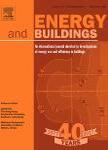版权所有:内蒙古大学图书馆 技术提供:维普资讯• 智图
内蒙古自治区呼和浩特市赛罕区大学西街235号 邮编: 010021

作者机构:Department of Thermal Technology Silesian University of Technology Konarskiego 22 44-100 Gliwice Poland CINTECX Universidade de Vigo Rúa Maxwell s/n 36310 Vigo Spain
出 版 物:《Energy and Buildings》 (Energy Build.)
年 卷 期:2025年第344卷
学科分类:08[工学] 0813[工学-建筑学] 0814[工学-土木工程]
基 金:Excellence Initiative- Research University Programme Silesian University of Technology, SUT, (32/014/SDU/10-27-07) Silesian University of Technology, SUT Ministerio de Ciencia, Innovación y Universidades, MCIU, (PID2021-126739OB-C21) Ministerio de Ciencia, Innovación y Universidades, MCIU
主 题:Adam Adaptive moment estimation ACO Ant colony optimization BA Batch size BBO Biogeography based optimization CNN Convolutional Neural network CV(RMSE) Coefficient of variation of root mean square error DL Deep learning DRNN Deep recurrent neural network DT Decision tree ELM Extreme learning machine GA Genetic Algorithm GRU Gated recurrent unit HL Heating load kNN k- nearest neighbor LSTM Long short- term memory LR Learning rate MAPE Mean absolute percentage error MBE Mean bias error MLP Multi-layer perceptron MOOA Multi-objective optimization algorithm MSE Mean squared error NARX-GA Nonlinear autoregressive external genetic algorithm nMBE Normalized mean bias error NoHL Number of hidden layers NoN Number of nodes NSGA-II Non-dominated genetic algorithm- II IT Indoor temperature OT Outdoor temperature PBIL Population- based incremental learning PSO Particle swarm optimization ReLU Rectified linear unit RF Random forest RMSE Root mean squared error R 2 Coefficient of determination SAE Stack autoencoder SOOA Single-objective optimization algorithm SVR Support vector regression WS Window size LSTM GRU NSGA-II Deep learning Heating load forecasting Hyperparameter optimization
摘 要:Heating load forecasting in the building sector is crucial for energy conservation, management, and regularization. This article presents two deep learning models based on long short-term memory (LSTM) and gated recurrent network (GRU) for 1- hour ahead heating load forecasting of a residential building. The hyperparameters (number of hidden layers, number of nodes in each hidden layer, learning rate, batch size and window size) of the models were optimized by employing non-dominated sorting genetic algorithm- II (NSGA-II). This work aims to compare the hyperparameter optimization of the two models by NSGA-II and compare their forecasting performances. The performances of the models were evaluated and compared using root mean square error (RMSE), coefficient of variation of root mean square error (CV(RMSE)), normalized mean bias error (nMBE) and mean absolute percentage error (MAPE). The models were tested on two different datasets including outdoor and indoor temperatures as the only environmental input features. Despite using limited environmental input features in the data, both models obtained high accuracies of forecasting. The NSGA-II- GRU model was 40.55% faster than the NSGA-II- LSTM model during training, indicating more efficient usage of the available hyperparameter resources. Also, the former outperformed the later in terms of MAPE by 8.86 % on test data 1 and 22.58 % on test data 2, respectively.